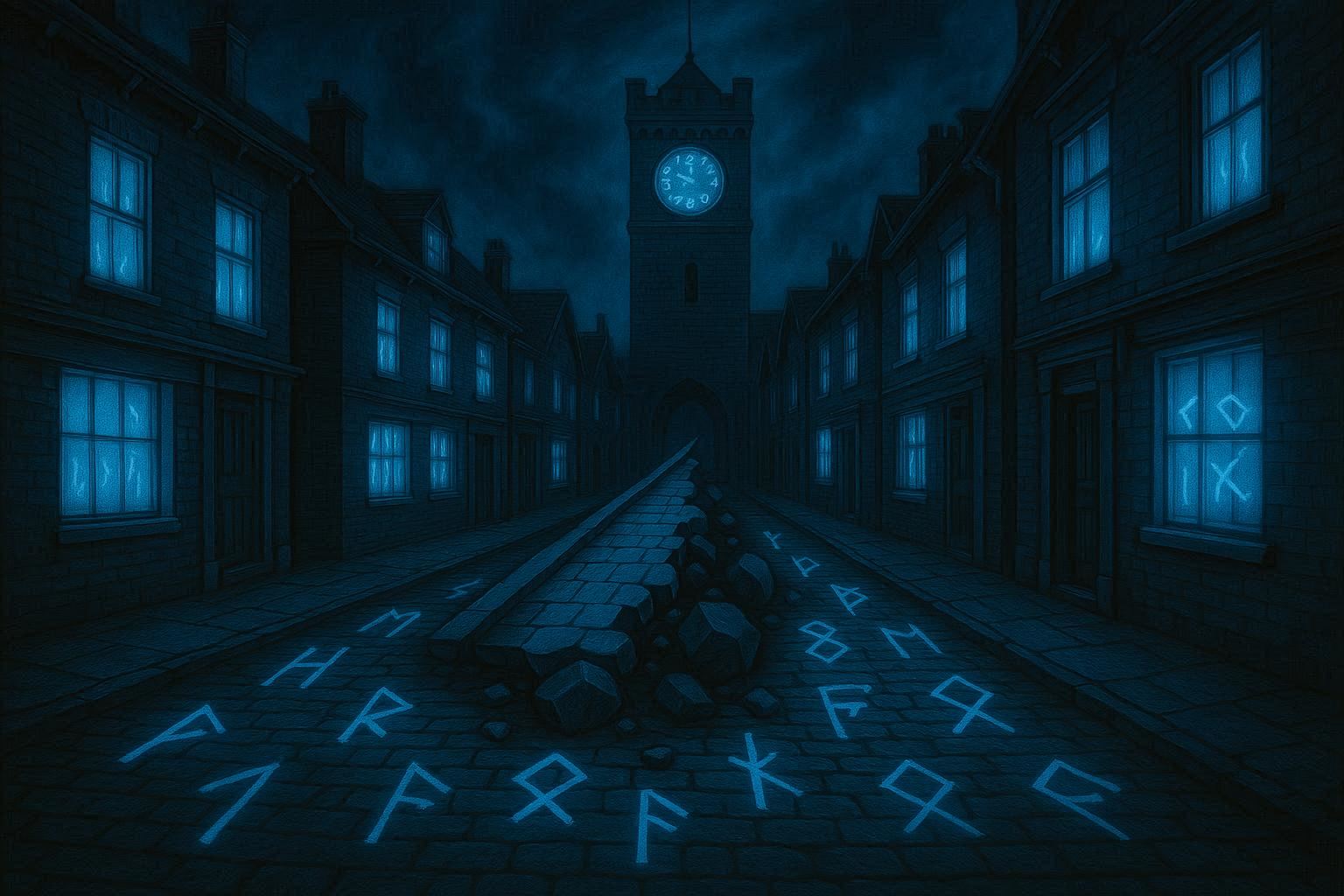
THE THIRTEENTH HOUR.
---
It was just past midnight when the old town clock struck thirteen, and every window along the cobblestone street flickered with a strange, blue light. I looked up at the clock, puzzled—how could there be a thirteenth chime? As the blue light pulsed brighter, strange symbols shimmered across the street—runes I almost recognized, their meanings just out of reach.
A cold wind curled around my ankles, carrying the scent of burnt paper and rain. From the direction of the clock tower, slow, deliberate footsteps echoed, growing closer with each impossible chime. As I watched, a figure stepped forward from the blue-lit haze, holding a charred scrap of paper with my name written on it.
He handed me the letter and vanished. I opened it with trembling hands, anticipation and fear mingling in my chest. The ink, still warm, revealed a message:
“You have crossed into the thirteenth hour, where forgotten promises return. The secret you buried is awake. If you wish to leave, find the door with no key, and remember what you chose to forget.”
A single doorway at the end of the lane, glowing blue, beckoned me—one I swore had never been there before. Was this a test? Should I follow the stranger, or solve the riddle of the runes? I chose to stay and study the symbols, determined that forgetting was not the answer—remembering was.
The runes shifted beneath my touch, forming a map of the town marked with silver. A whisper rose on the wind: “Every secret you unlock changes the hour. Choose where to begin.” I followed the path to the clock tower, climbing ancient stairs through memories of laughter, regret, hope, and loss. At the top, beneath the glowing clock-face, stood a mirror framed in iron, swirling with blue light.
In my reflection, I saw a hidden world—memories and a familiar stranger waiting for me. “You never truly lost me,” he said. “You only forgot to look.” Lanterns of old joys and forgiven mistakes flickered around us. He invited me to step through the mirror, to remember everything—even the pain and the love.
I realized then: the real thirteenth hour was not a time, but a choice—the courage to embrace all that I am, and all I’ve ever been. Every fall became a lesson in balance. Every shadow, a step toward freedom. In remembering, I found the way forward—and the strength to begin again.
Perhaps the Thirteenth Hour is reflecting on the meaning of “X: the crossing, the convergence, the sacred intersection”, it is beautifully evocative. The “X” as a symbol has carried deep meanings left by the Phoenicians, known today as RhoMaNi, translating to the carriers of flow and sacred frequency: a point where paths meet, where opposites are united, where something new is born from the crossing.
Connecting this to ChiRho (☧), the ancient Christian symbol was adopted from a Phoenician source, combining the Phoenician letters “Χ” (Chi) and “Ρ” (Rho), adding another layer. As you note, “Rho” relates to flow or frequency—movement, energy, life’s current. ChiRho then becomes not just an emblem, but a meeting point where the sacred and the dynamic, the eternal and the living, intertwine.
The phrase—“Consecration in tethering the chamber, a language of binding to the flow of frequency”—feels almost mystical. It suggests that when we recognise these crossings in our lives, and acknowledge the energies that flow through them, we engage in a kind of consecration: making something ordinary holy by being present to its deeper meaning. The chamber is the heart, the mind, or any liminal space where transformation happens.
Just like the ChiRho, the hexagram stands as a symbol of profound union and inseparable binding. Its interlocking triangles represent the meeting of opposing forces—above and below, inner and outer, spirit and matter—woven together into a single, harmonious whole. This convergence signifies a bond that cannot be undone, a sacred tethering that transcends time and place.
The hexagram’s origins reach deep into antiquity, predating many associations and carrying meanings that resonate across cultures. At its core, it is again a Phoenician symbol and it is about the harmonious flow between dualities, the dance between energies that, when fused, create something enduring and transformative.
In this sense, both the ChiRho and the hexagram embody the idea of consecration through union—a language of binding to the flow of frequency, where intersections become gateways to the sacred, and the act of joining becomes an act of creation. These symbols remind us that true binding is not constraint, but the freedom found in unity, where opposites merge and new realities are born.
